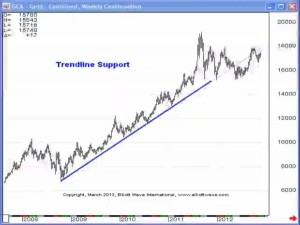 One of the most basic skills necessary when looking at a stock chart is using trend lines and identifying support and resistance. Unfortunately, sometimes as we learn more sophisticated methods we tend to forget the basics. So if you are just starting in the markets you should find this information valuable.
One of the most basic skills necessary when looking at a stock chart is using trend lines and identifying support and resistance. Unfortunately, sometimes as we learn more sophisticated methods we tend to forget the basics. So if you are just starting in the markets you should find this information valuable.
Drawing a trend line is one of the first things people learn when they study technical analysis. Typically, they quickly move on to more advanced topics and too often discard this simplest of all technical tools. So we will start with the lowly trend line and then we will look at 5 separate charts in an effort to brush up on 3 ways to identify support and resistance. As I’m sure you know support is like a floor for prices, i.e. a level at which falling prices tend to stop and reverse and go up again. Conversely, resistance is like a ceiling, where rising prices tend to stop and begin falling. So, let’s look at trend lines, support and resistance. ~Tim McMahon, editor.
How a Simple Line Can Improve Your Trading Success
Elliott Wave International’s Jeffrey Kennedy explains many ways to use this basic tool
By Elliott Wave International
The following trading lesson has been adapted from Jeffrey Kennedy’s eBook, Trading the Line — 5 Ways You Can Use Trendlines to Improve Your Trading Decisions. You can download the 14-page eBook here.
“How to draw a trendline” is one of the first things people learn when they study technical analysis. Typically, they quickly move on to more advanced topics and too often discard this simplest of all technical tools.
Yet you’d be amazed at the value a simple line can offer when you analyze a market. As Jeffrey Kennedy, editor of Trader’s Classroom service, puts it:
“A trendline represents the psychology of the market, specifically, the psychology between the bulls and the bears. If the trendline slopes upward, the bulls are in control. If the trendline slopes downward, the bears are in control. Moreover, the actual angle or slope of a trendline can determine whether or not the market is extremely optimistic or extremely pessimistic.”
In other words, a trendline can help you identify the market’s trend. Consider this example in the price chart of Google.
That one trendline — drawn between the lows in 2004 and the lows in 2005 — provided support for a number of retracements over the next two years.
That’s pretty basic. But there are many more ways to draw trendlines. When a market is in a correction, you can draw a trendline and then draw a parallel line: in turn, these two parallel lines can create a channel that often “contains” the corrective price action. When price breaks out of this channel, there’s a good chance the correction is over and the main trend has resumed. Here’s an example in a chart of Soybeans. Notice how the upper trendline provided support for the subsequent move.
3 Ways to Identify Support and Resistance – 5 Chart Examples
By Elliott Wave International
This lesson considers three ways to identify price support and resistance in the markets you trade.
- Previous highs and lows
- Trendline support
- Fibonacci Ratios
These examples are adapted from Jeffrey Kennedy’s Trader’s Classroom service.
1) Uptrends terminate at resistance while downtrends terminate at support. Previous highs and lows often act as resistance and support.
In ALCOA Inc (AA), the September 2012 selloff found support near the previous July 2012 low.
The February 2013 peak occurred following a test of resistance at the January peak at $9.33.
2) Trendlines offer resistance and support for prices.
The 2008 advance in Gold found support numerous times near the trendline that connected the lows of the move, as you can see below:
Conversely, the trendline connecting the highs of Wheat’s 2012-2013 decline provided resistance for counter-trend price action.
3) Fibonacci ratios also identify resistance and support. As Elliotticians, we often look at retracements, the most common being .382, .500 and .618. In Akamai Tech, Fibonacci support ignited the July and November 2012 rallies:
In the same chart you can also notice how Fibonacci resistance in AKAM halted the July 2012 and February advances.
For more advanced information on trendlines, download Jeffrey Kennedy’s Free 14-page eBook, Trading the Line — 5 Ways You Can Use Trendlines to Improve Your Trading Decisions. It explains the power of simple trendlines, how to draw them, and how to determine when the trend has actually changed. Download your free eBook here.
You might also enjoy:
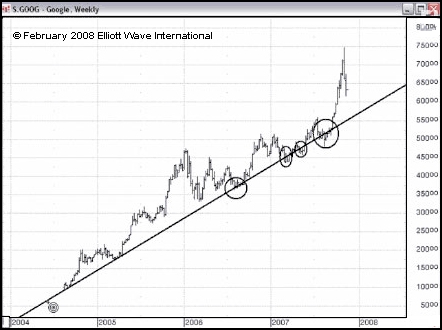

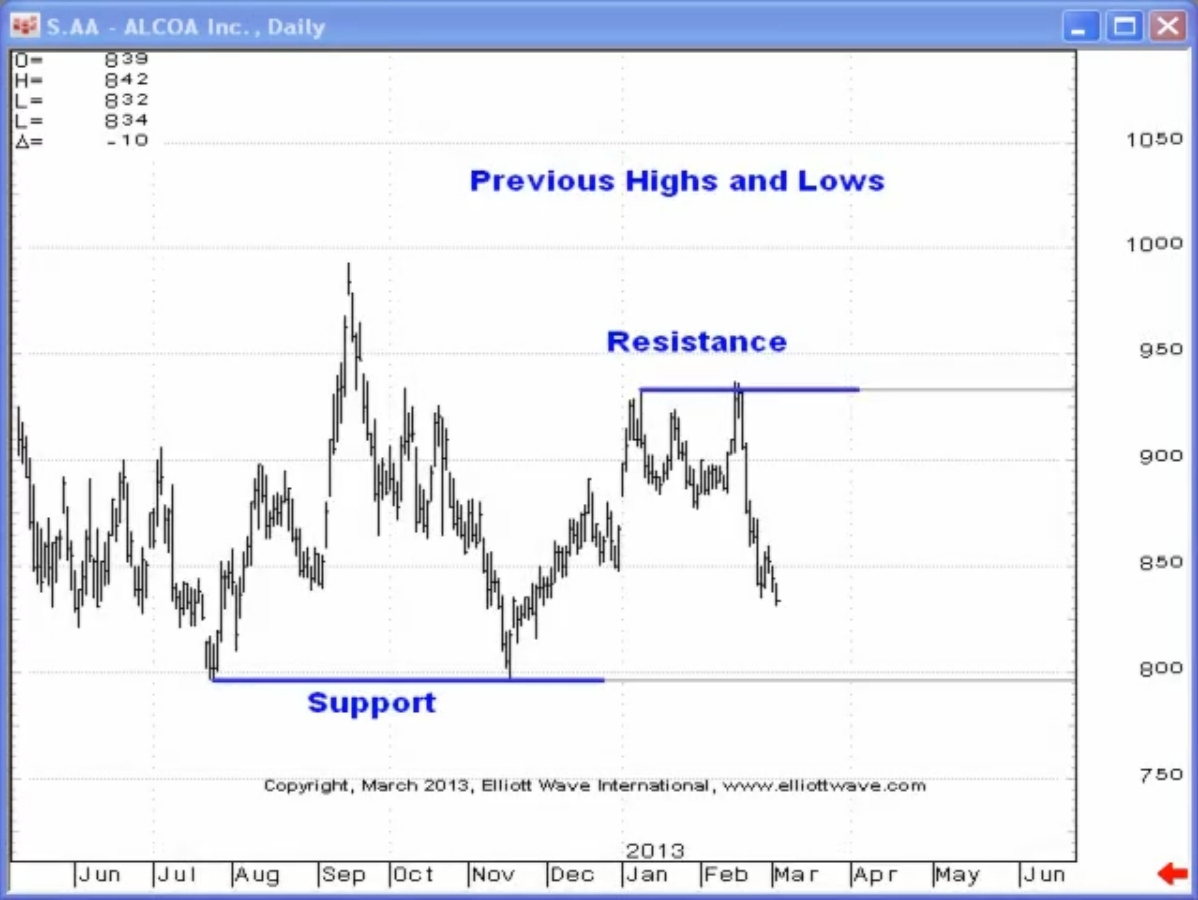

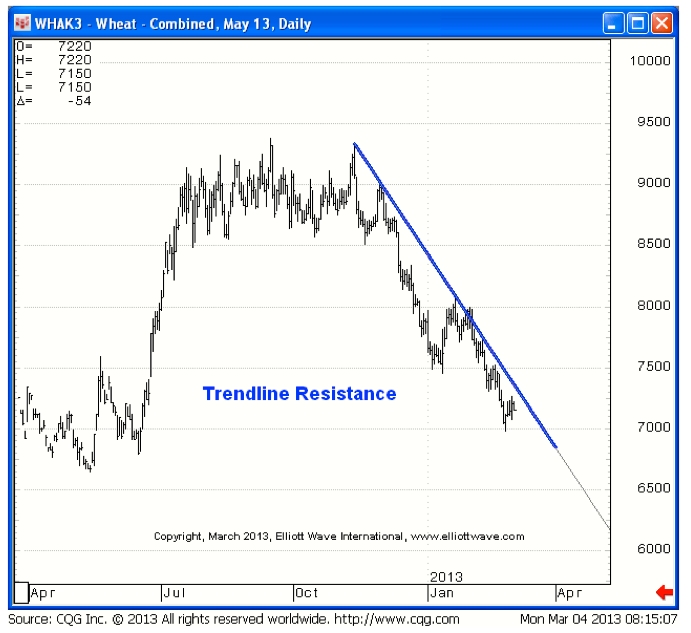
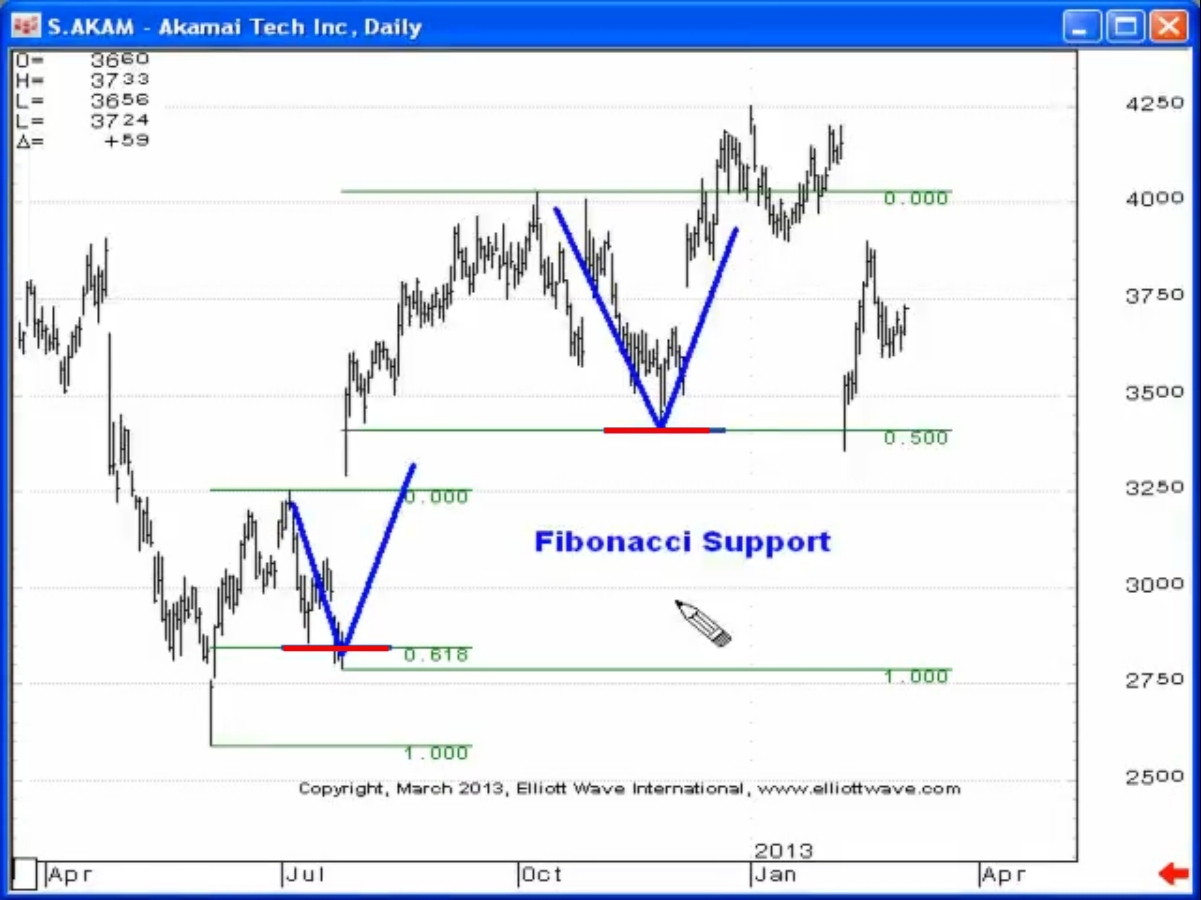
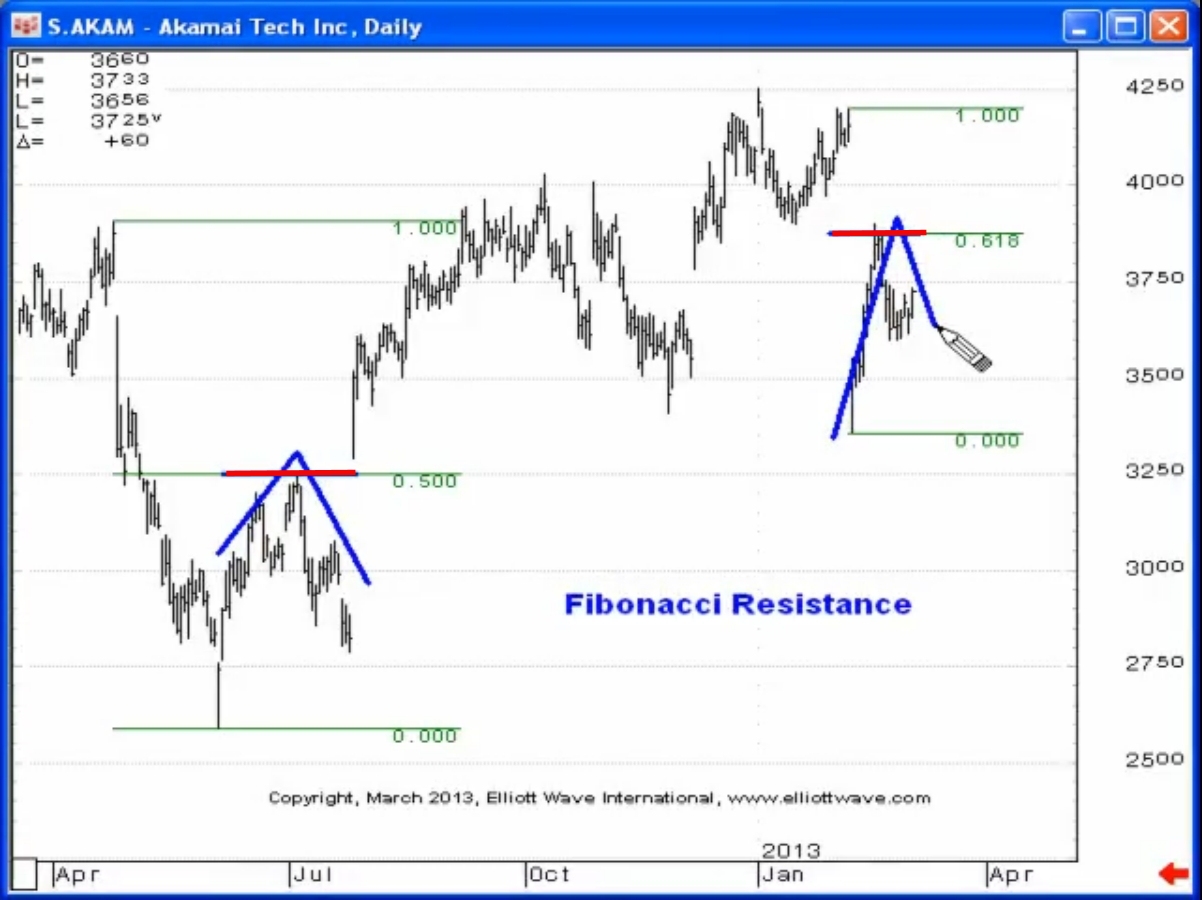
[…] Using Trend Lines and Identifying Support and Resistance […]